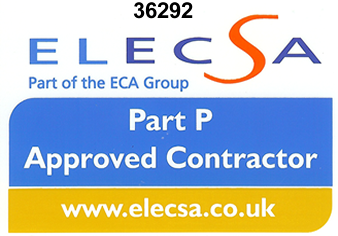





2.4Kwp Canadian Solar Array using SMA 2500HF-30 inverter, Walton, Somerset
Science behind the phenomena
It was a scientist in the field of of physics, Alexandre-Edmond Bequerel, who first discovered the photo-voltaic effect in 1839.The name photo-voltaic comes from the driving force behind this technology, Which is the ray of light. Light rays consist of unimaginably tiny particles, called photons.
Photo Voltaics (PV) is the active solar technology which produces electricity from solar radiation using solar cells mounted in PV modules.
There are two broad categories of PV system, grid tied systems which are connected to the electricity grid and stand alone which are not.
PV uses the light from the sun not the heat. All the PV modules connected together in a system are referred to as the PV array.
The most common type of solar cell is the crystalline silicon cell. The first stage in their production is the manufacture of extremely thin wafers of silicon with a thickness of between 0.2-0.3mm from high purity silicon. These cells are doped with small quantities of other atoms, usually boron and phosphorus to create two layers of silicon with different electrical properties: a positive (p) layer of p-type silicon and a negative (n) layer of n-type silicon. A conducting grid is fixed above and below to enable electron flow. At the border between these two layers (known as the p-n junction) an electrical field is created. On exposure to light the charges in the electrical field separate. This gives rise to a voltage of about 0.5v DC between the electrical contacts in the cell, the value of this voltage is largely independent of the intensity of the light falling on the cell.
Commercially mass produced solar cells can achieve an efficiency of 20% i.e. that is they will convert 20% of the sunlight falling on the surface area of the cell into electrical energy. The array efficiency is less due to system losses such as shading of the array, voltage drop in cables, inverter losses and resistances in connections, switches, breakers and fuses.
The three main types of commercially available cells are:
Cell Material |
Module Efficiency |
Surface Area Required for 1Kwp |
Mono-crystalline silicon |
11-16% |
7-9m² |
Polycrystalline silicon(EFG) |
10-14% |
8-9m² |
Polycrystalline |
8-10% |
9-11m² |
Thin film |
6-8% |
11-13m² |
Amorphous silicon |
4-7% |
16-20m² |
The electrical output of a cell is proportional to the amount of solar radiation falling on it. The maximum power of a cell (or a module) is described as its peak power (Wp). This is defined as the electrical output in watts achieved under standard test conditions (STC) - 1000w/m² solar insolation at a cell temperature of 25°C and an air mass of 1.5.
